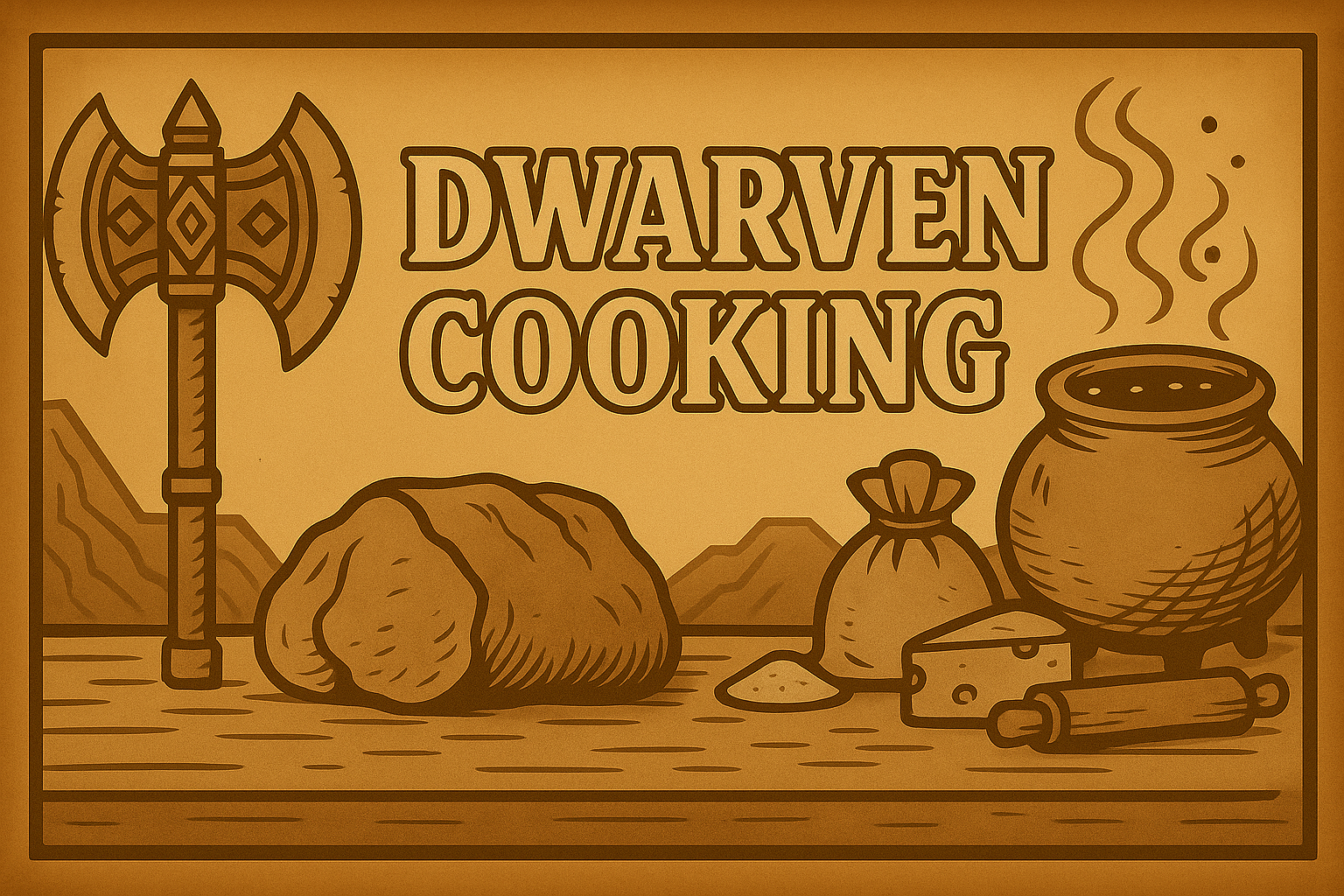Stoneskin Yogurt
Stoneskin Yogurt is a thick, gritty, and deeply nourishing Dwarven fermented dairy product, traditionally made with cave-hog milk and stone-thistle cultures, then aged in mineral-lined clay pots deep underground. It earns its name from the firm crust that forms on the top layer — a textured rind of minerals and curd known to crunch slightly when broken with a spoon.
It's prized for its digestive strength, bone-fortifying calcium, and the fact that it “doesn’t slosh when carried.” A common breakfast for miners and warriors, it’s also used in ceremonial cooking and healing broths.
“If your spoon bends, you made it right.”
Manufacturing process
Instructions
- Heat the Milk
- Pour milk into a heavy pot and heat slowly to 85°C (185°F). Stir to avoid scorching.
- Once heated, remove from fire and let cool to around 45°C (113°F) — slightly warmer than body temp.
- Add Starter and Mineral
- Mix in yogurt starter and optional powdered limestone. Stir gently until fully incorporated.
- Add pinch of salt and any additional textures like mossbarley husk for authenticity.
- Ferment Underground or in Warm Stone Box
- Pour mixture into your stone or clay container. Cover with a clean cloth and tie shut.
- Set in a warm, dark, slightly humid space — such as near a forge vent or within a sunstone-insulated crate.
- Let ferment for 12–24 hours, depending on strength and temperature. You'll know it's ready when:
- The texture is dense, almost spoon-breaking.
- A gray-beige crust (the "stoneskin") forms on the surface.
- The scent is sharp, earthy, and slightly sulfurous, but not rotten.
- Cool and Store
- Remove from warmth and place in a cooler stone chamber or root cellar to set for another 12–24 hours.
- Refrigerate (or stone-chill) and eat within 7–10 days.
“A bowl of stoneskin steadies the hand and anchors the beard.”
Significance
Cultural Notes
- Young dwarves are said to “earn their bones” with a bowl of stoneskin yogurt every day.
- Many holds say the firmer the crust, the more honorable the maker.
- A chef-priest will sometimes assess apprentices by asking them to "split the skin without tearing the soul" — cracking the top without breaking the body of the yogurt beneath.
- Used in both culinary and alchemical healing remedies for gut ailments, fatigue, and mineral depletion.
Item type
Consumable, Food / Drink
Raw materials & Components
Ingredients
- 4 cups cave-hog milk (or rich whole milk with added powdered calcium for substitute)
- 2 tbsp stone-thistle yogurt starter (or plain Greek yogurt with live cultures)
- 1 tsp powdered limestone or crushed mineral chalk (optional, for true 'stoneskin' texture)
- Small pinch rock salt
- Optional: Crushed tunnel herbs, ash-spice, or mossbarley husk for flavor and texture
Tools
Equipment
- Unglazed clay, stone, or ceramic jar
- Cloth and rope/twine to cover
- Warm, stable environment (can be created using warmed stone box or sunstone shelf)
Serving Suggestions
- Scoop and eat plain with a hunk of Stonebread or Embercrust Roll
- Stir in glowcap jam, mushroom honey, or pickled tunneltuber
- Use as a base for stews, baking agent, or even savoury dip when mixed with herbs and ash-spice
- Ceremonial versions include crushed ancestor salt and are served with smoked eggs during rite feasts



Comments